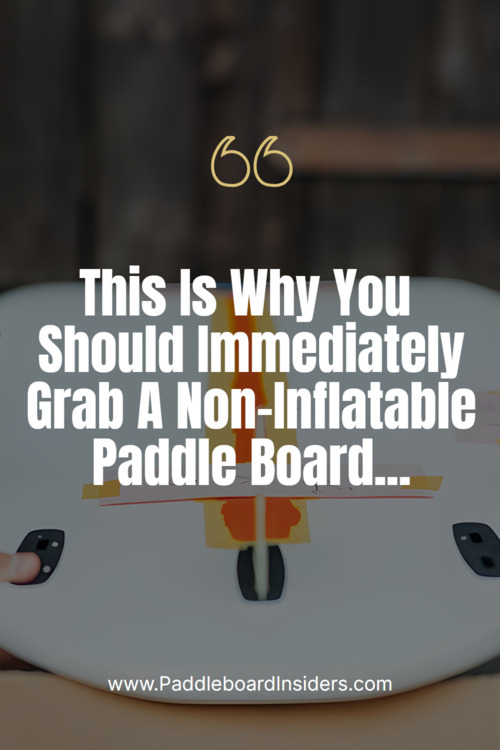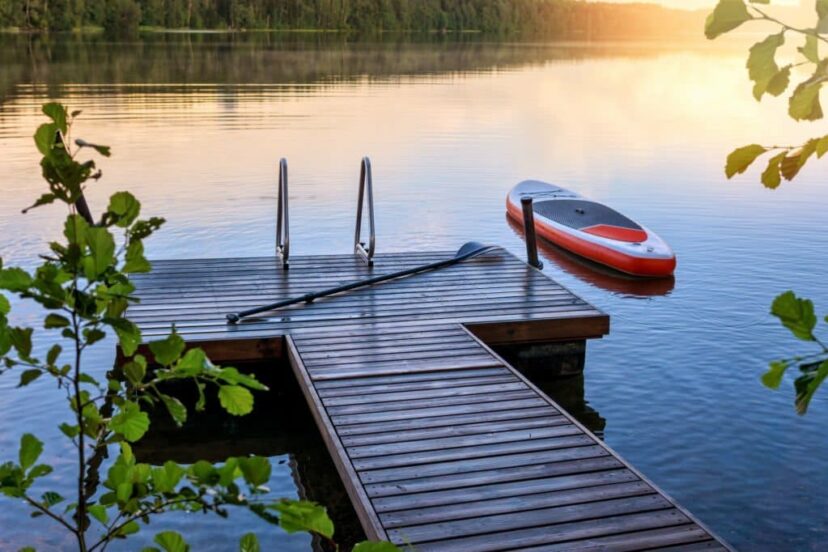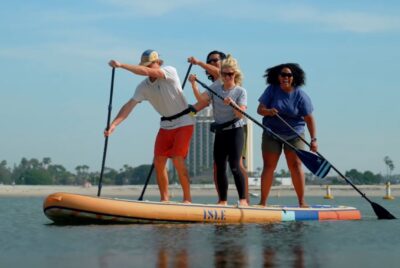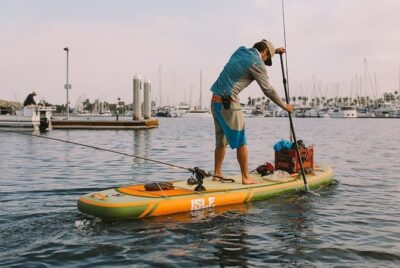This Is Why You Should Immediately Grab A Non-Inflatable Paddle Board In 2024…
*We may earn a commission for purchases made using our links. Please see our disclosure to learn more.
Are you interested in paddle boarding but not sure which board to get? Most people immediately reach for an inflatable SUP, but non-inflatable paddle boards are gaining the spotlight in 2024 for a few key reasons.
This article dives into the compelling reasons why securing a solid, non-inflatable stand up paddle board in 2024 could be your best move yet.
Discover the latest must-haves for water enthusiasts—keep reading! 🏄♂️
| Looking for our best paddle board product recommendations? Check the Paddleboard Insiders Buyer Guides |
Table Of Contents
- The Benefits of Non-Inflatable Paddle Boards
- Key Differences Between Inflatable & Non-Inflatable Paddle Boards:
- Latest Innovations in Non-Inflatable Paddle Board Technology
- 3 Amazing Non-Inflatable Paddle Boards To Buy In 2024:
- Conclusion
- FAQs
- What are the main advantages of non-inflatable paddle boards over inflatable ones?
- Are non-inflatable paddle boards suitable for beginners?
- How do non-inflatable paddle boards perform in different water conditions?
- What are the latest technological advancements in non-inflatable paddle boards?
- How do I maintain and store my non-inflatable paddle board?
The Benefits of Non-Inflatable Paddle Boards
Non-inflatable paddle boards are more durable and less prone to punctures, providing greater stability and control in various water conditions.
More durable and less prone to punctures
Non-inflatable paddle boards stand the test of time with their tough construction. They resist damage and wear, making them ideal for explorers who frequent rocky shores or navigate through debris-filled waters.
Unlike inflatable SUPs that can be susceptible to sharp objects and require careful handling, solid paddle boards offer peace of mind. You won’t have to worry about bringing repair kits or being stranded with a deflated board.
Choose a rigid paddle board for relentless durability that keeps you paddling without interruption. These boards shrug off impacts that would side-line an iSUP, ensuring your water adventures continue uninterrupted.
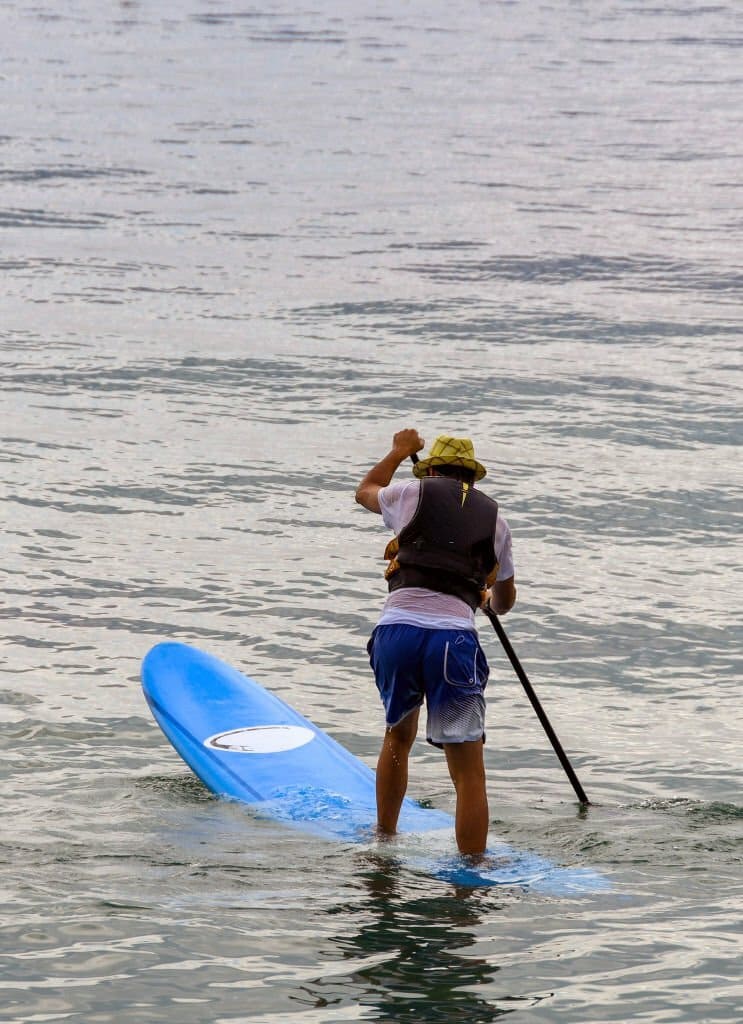
Whether you’re catching waves while SUP surfing or gliding across a serene lake, these sturdy options provide longevity that outpaces the competition. With non-inflatable paddle boards’ robust nature, enthusiasts spend less time on maintenance and more time enjoying the glide on the water.
Greater stability and control
Balancing on a paddle board becomes easier with a non-inflatable model. Their solid construction offers firmer support, allowing paddlers to maintain steadiness even when the water gets choppy.
If you’ve tried SUP surfing or gliding across quiet lakes, you know that control is key; rigid paddle boards respond quickly and precisely to your movements. They cut through water smoothly, providing an enjoyable experience without fear of falling in.
These steady behemoths tackle diverse water conditions with ease – from tranquil ponds to rocky shores where inflatable SUPs might falter. You can confidently navigate around obstacles and steer clear of potential hazards as the solid deck underfoot gives better feedback for quick adjustments.
Transitioning into the next section, it’s not just about staying upright—non-inflatables simplify transport and storage solutions too.
Suitable for various water conditions
Non-inflatable paddle boards shine in their adaptability to different water conditions, handling everything from calm lakes to choppier seas. With a solid paddle board under your feet, you gain the confidence to tackle diverse environments, be it smooth gliding on flat waters or cutting through waves while SUP surfing.
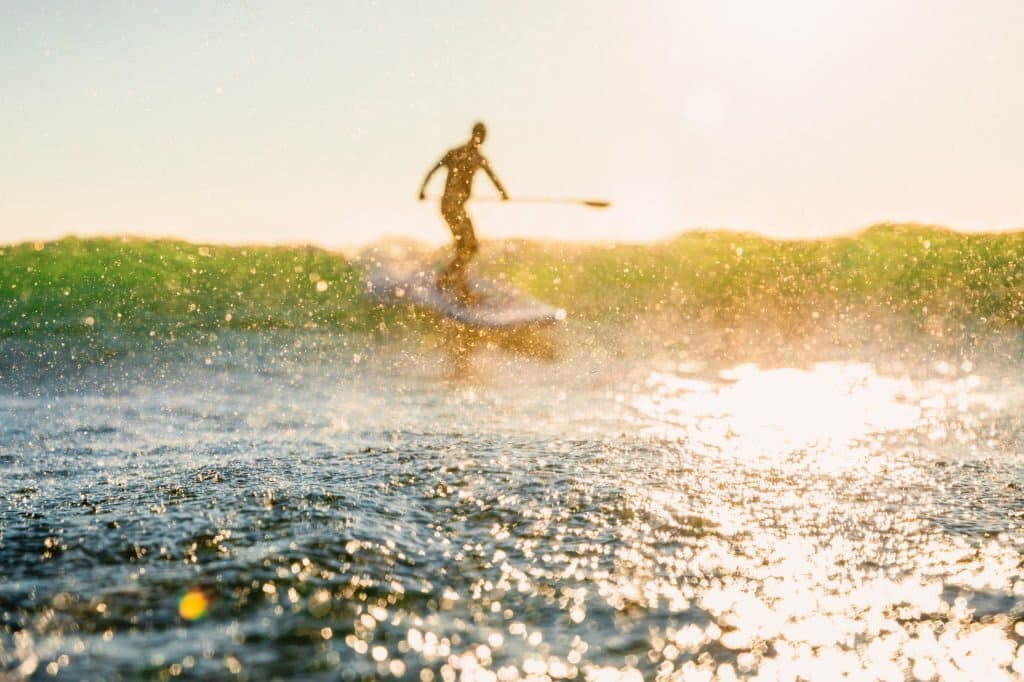
Their rigid structure ensures that they remain stable and agile in scenarios where inflatable SUPs might struggle with wave resistance.
Experts agree that non-inflatables offer an edge in performance due to their rigidity and shape which maintain speed and maneuverability. You’ll find that catching waves becomes easier with these boards because of their better glide properties.
Whether you’re navigating rocky shores or pushing off for a leisurely river excursion, rest assured your stand up paddle board is built tough enough to withstand varied aquatic challenges without compromising on agility.
| Looking for insider guides to some amazing paddle boarding locations? Check the Paddleboard Insiders Location Guides |
Doesn’t require constant inflation and deflation
Non-inflatable paddle boards are easier to transport and store due to their rigid construction, which eliminates the need for inflation and deflation. Their solid design allows for convenient handling and stacking in storage spaces or on roof racks, making them a practical choice for outdoor enthusiasts with limited space.
These paddle boards can be easily loaded onto vehicles without the concern of air leakage or inflation pumps, providing a hassle-free experience when moving between different waterways.
Additionally, non-inflatable paddle boards offer increased durability during transportation, reducing the risk of damage from accidental punctures or tears.
| Here’s what you need to know about transporting a SUP: The 8 Best Paddle Board Racks For Easy Transport & Storage (2024 Edition) |
Key Differences Between Inflatable & Non-Inflatable Paddle Boards:

Here are the major differences that you should know about:
| Non-Inflatable Paddle Boards | Inflatable Paddle Boards |
| More susceptible to dings and cracks upon impact with hard surfaces. They are typically made of materials like fiberglass, epoxy, or carbon fiber, which are rigid but can be damaged more easily. | More durable when it comes to impact resistance. If they hit rocks, docks, or other hard surfaces, they are less likely to get damaged due to their air-filled, flexible nature. |
| Offer better performance in terms of speed and maneuverability. They are preferred for racing, surfing, and other high-performance activities due to their rigid structure and shape. | Tend to be thicker and have more buoyancy but might lack the speed and agility of hard boards. They are better for leisure paddling and are easier for beginners to handle. |
| Require more space for storage and a vehicle with a roof rack for transportation. They are less convenient to transport long distances and require more careful handling to avoid damage. | They can be deflated, rolled up, and easily transported in a backpack or car trunk. This makes them ideal for those with limited storage space or those who travel frequently. |
| They can be heavier and more cumbersome to carry, especially for larger or longer boards. The weight varies depending on the materials used in construction. | Lighter and easier to carry, especially when deflated. This makes them more suitable for solo paddlers or those who may have difficulty lifting heavier objects. |
Now it may seem like inflatable paddle boards are better from this comparison…
But there is one key consideration that we’re missing – and that is how fast technology is moving!
Latest Innovations in Non-Inflatable Paddle Board Technology
New advancements in non-inflatable paddle board technology include lightweight and durable materials, advanced fin systems, and improved tracking and maneuverability.
Interested to know more about why you should grab a non-inflatable paddle board in 2024? Keep reading!
Lightweight and durable materials
Non-inflatable paddle boards are often constructed using lightweight and durable materials such as fiberglass, epoxy, or carbon fiber. These materials enhance the board’s overall performance by providing a rigid and stable platform for paddling in various water conditions.
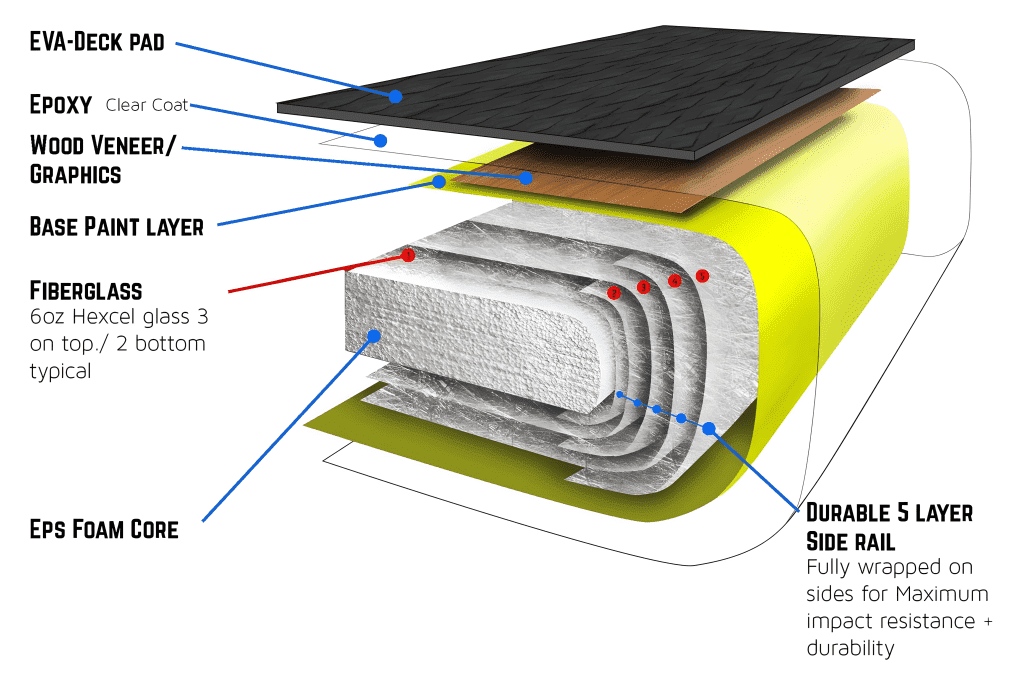
Additionally, their durability ensures that non-inflatable paddle boards are less susceptible to damage from rocky shores or accidental impacts, making them an ideal choice for those seeking a long-lasting investment in water sports equipment.
Innovations in paddle board technology have led to the use of advanced composite materials that offer increased strength without compromising on weight. This results in paddle boards that are not only more responsive and agile but also easier to transport and store compared to traditional solid boards.
As manufacturers continue to refine these lightweight and durable materials, non-inflatable paddle boards emerge as reliable options for water recreation enthusiasts looking for enhanced performance on the open waters.
Advanced fin systems
Non-inflatable paddle boards often come equipped with advanced fin systems that enhance their performance on the water. These innovative fin setups are designed to improve tracking and maneuverability, allowing for better control and agility while paddling.
Advanced fin systems also contribute to the boards’ overall stability, making them ideal for navigating various water conditions such as choppy or windy environments.
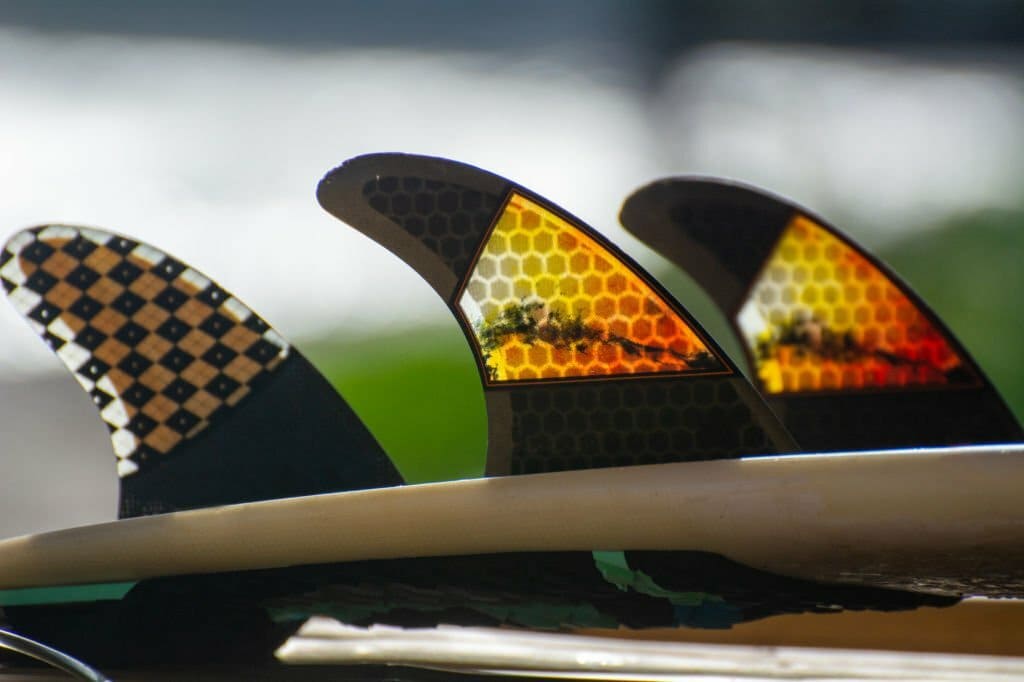
The incorporation of advanced fin systems in non-inflatable paddle boards adds a significant advantage for SUP surfers, providing better glide and easier wave-catching capabilities.
These features make non-inflatable paddle boards an excellent choice for those seeking enhanced agility and responsiveness during their aquatic adventures. Looking into the latest innovations in paddle board technology, it’s essential to understand how these improvements can elevate the overall experience of stand-up paddleboarding.
| Here’s a detailed guide on choosing paddle board fins for your SUP: Choosing Paddle Board Fins Like a Pro: A Comprehensive Buyer’s Guide |
Improved tracking and maneuverability
Non-inflatable paddle boards offer improved tracking and maneuverability due to their rigid structure and advanced fin systems. These features allow for greater control and precision while navigating through different water conditions, making them ideal for paddle boarders looking to enhance their agility on the water.
This is all based on the different fin setups that you get access to with non-inflatable paddle boards.
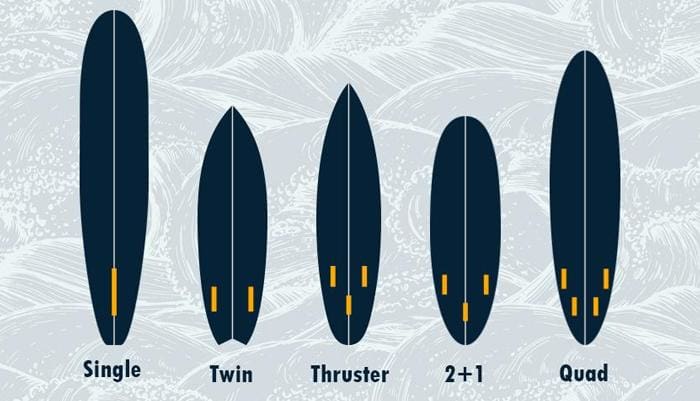
With better glide and responsiveness, non-inflatable paddle boards provide an optimal experience for SUP surfing enthusiasts seeking heightened performance in catching waves.
The latest advancements in non-inflatable paddle board technology have significantly enhanced the tracking capabilities, providing a smoother ride and increased stability. Additionally, the improved maneuverability allows paddlers to effortlessly navigate through various water environments, amplifying the overall enjoyment of stand up paddleboarding adventures.
Looking ahead to 2024, these advancements make non-inflatable paddle boards a compelling choice for those seeking enhanced performance and control on the water.
3 Amazing Non-Inflatable Paddle Boards To Buy In 2024:
So if you want to look into a non-inflatable paddle board then here are 2 amazing examples that you should seriously consider.
Recommendation #1: ISLE Versa 10’5″
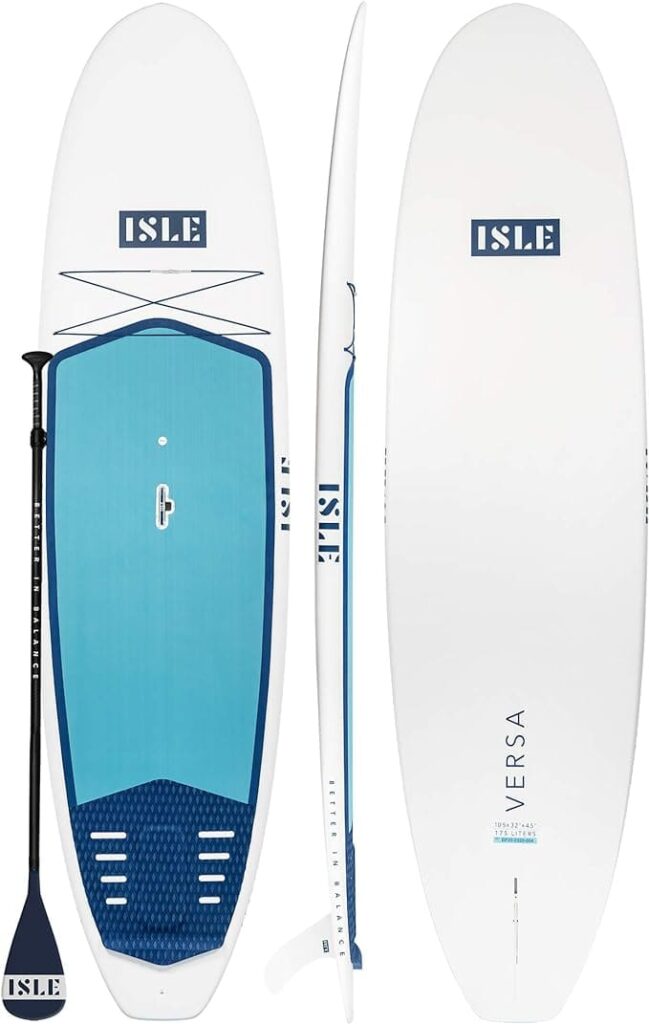
Where To Buy: Amazon
Specs & Features:
– Size of 10’5″
– Made of light-weight epoxy that uses thermal moulding technology to eliminate waste and be more eco-friendly.
– This is a really well-rounded board that will match many riders.
The ISLE Versa Rigid Stand Up Paddle Board is engineered to cater to both novices and seasoned paddlers, offering versatility for a range of activities including tranquil glides on still waters, SUP yoga sessions, and fishing trips. Its standout feature lies in the cutting-edge thermal-moulded technology, which amalgamates a lightweight structure with superior durability and environmental consciousness.
This comprehensive package includes an adjustable carbon hybrid paddle tailored to fit various heights, a comfortable 8-foot coil leash, and a sturdy nylon fin. Available in two sizes, the Versa can support users weighing up to 300 pounds. ISLE prioritizes customer contentment, offering a 60-day trial and a 1-year warranty on their products. Conceived and meticulously tested in San Diego, this paddle board is a testament to high-quality craftsmanship, designed to elevate your paddling adventures.
| Check Price ➡️ Amazon |
Recommendation #2: Tower Wooden 9’10”
Where To Buy: Tower
Specs & Features:
– Size of 9’10” (Width of 32 inches)
– Made of sandwich-construction (bamboo veneer compresssed between two layers of fiberglass).
– Exceptional for flat water paddling.
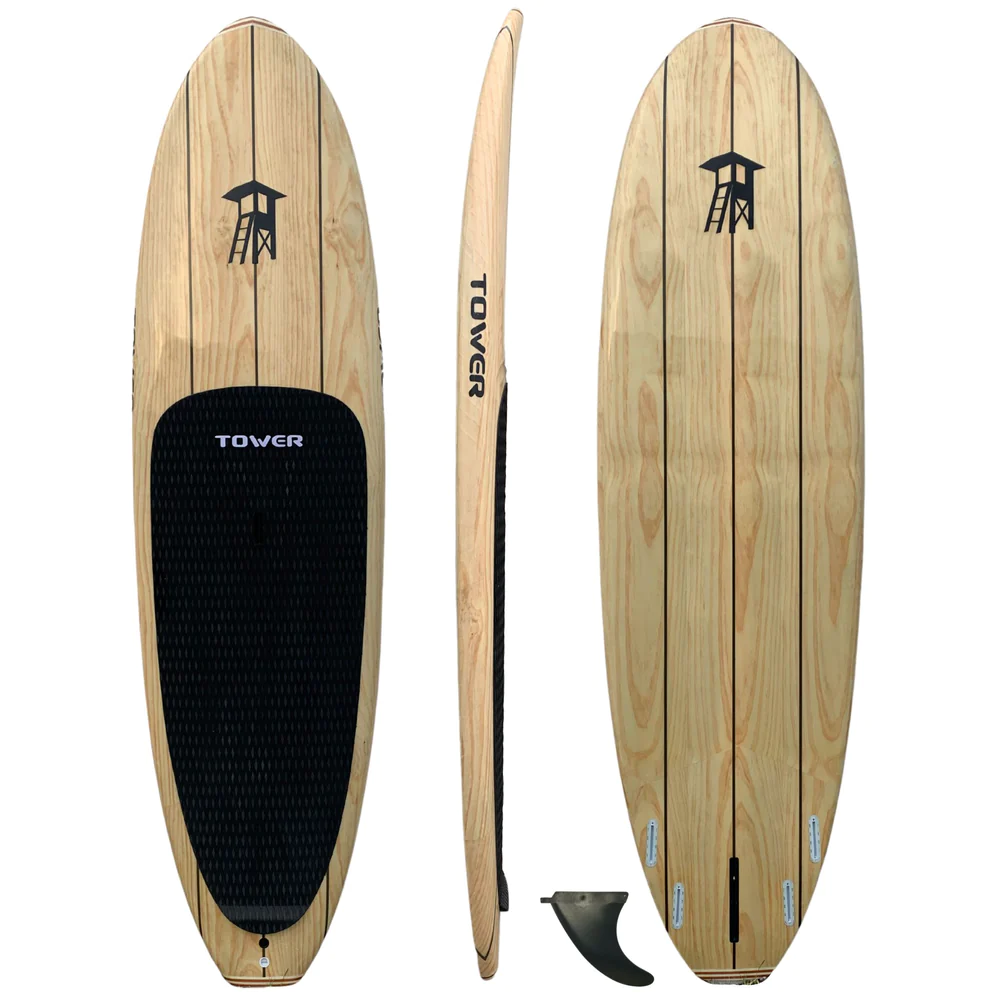
This Wood Paddle Board stands out as a world-class product, known for its exceptional versatility. It’s perfectly balanced for effortless paddling on flat water, making it an ideal choice for beginners. Additionally, it’s adept at handling wave action, offering a thrilling experience for more adventurous paddlers.
The board’s construction is both lightweight and durable. Measuring 9’10” in length and 32″ in width, it provides ample stability and buoyancy to comfortably support someone over 200 lbs, or even an adult with a child upfront. Its aesthetic appeal is undeniable, featuring a stunning wooden design that’s sure to draw attention and compliments from onlookers at the beach.
| Check Price ➡️ Tower Paddle Boards |
Recommendation #3: Boardworks Kraken 11′

Where To Buy: Amazon
Specs & Features:
– Size of 11′ (Width of 32 inches)
– Made of fiberglass and epoxy
– Exceptional for surfing and touring
The Kraken is a versatile paddleboard that is a great option for riding waves along with general. It has a wide stance for stability along with a sharp nose for dealing with any rough water that you encounter (hence why it has a sharp nose)
It is a little pricey but it is the #1 surfing SUP that I could recommend for you. It will give you hours of pleasure, while letting you improve without being hindered by your skill outgrowing your SUP. This is definitely one of the non-inflatable paddle boards that I would seriously consider buying in 2024.
| Check Price ➡️ Amazon |
Conclusion
Make the most of your water adventures in 2024 with a non-inflatable paddle board. Experience enhanced stability, control, and agility on various water conditions. Embrace the durability and long-term cost savings that come with this solid option.
Upgrade to a non-inflatable paddle board today for an exciting year ahead.
| Looking for insider guides to some amazing paddle boarding locations? Check the Paddleboard Insiders Location Guides |
FAQs
What are the main advantages of non-inflatable paddle boards over inflatable ones?
Non-inflatable paddle boards excel in durability, stability, and performance. They are less prone to damage from impact and offer greater control and agility, especially in rough water conditions. Their solid construction provides a firmer platform, improving balance and ease of maneuvering.
Are non-inflatable paddle boards suitable for beginners?
Yes, non-inflatable paddle boards are suitable for beginners. Their stability and firm surface make it easier for beginners to maintain balance and control. However, beginners should be mindful of the board’s weight and storage requirements, as non-inflatable boards are generally heavier and less compact than inflatable ones.
How do non-inflatable paddle boards perform in different water conditions?
Non-inflatable paddle boards are versatile and perform well in a variety of water conditions. Their rigid structure allows for better tracking and maneuverability, making them suitable for calm lakes, choppy seas, and even for SUP surfing. They can handle diverse environments more effectively than inflatable boards.
What are the latest technological advancements in non-inflatable paddle boards?
Recent advancements include the use of lightweight yet durable materials like carbon fiber, improved fin systems for better tracking and agility, and enhanced designs that optimize speed and maneuverability. These innovations contribute to the boards’ performance, making them easier to handle and more enjoyable to use.
How do I maintain and store my non-inflatable paddle board?
Maintaining a non-inflatable paddle board involves regular cleaning, checking for any dings or cracks, and repairing them promptly. For storage, ensure the board is stored in a cool, dry place away from direct sunlight. Avoid stacking heavy items on top of the board to prevent warping or damage.
| Here’s what you need to know about storing & transporting a SUP: The 8 Best Paddle Board Racks For Easy Transport & Storage (2024 Edition) |
